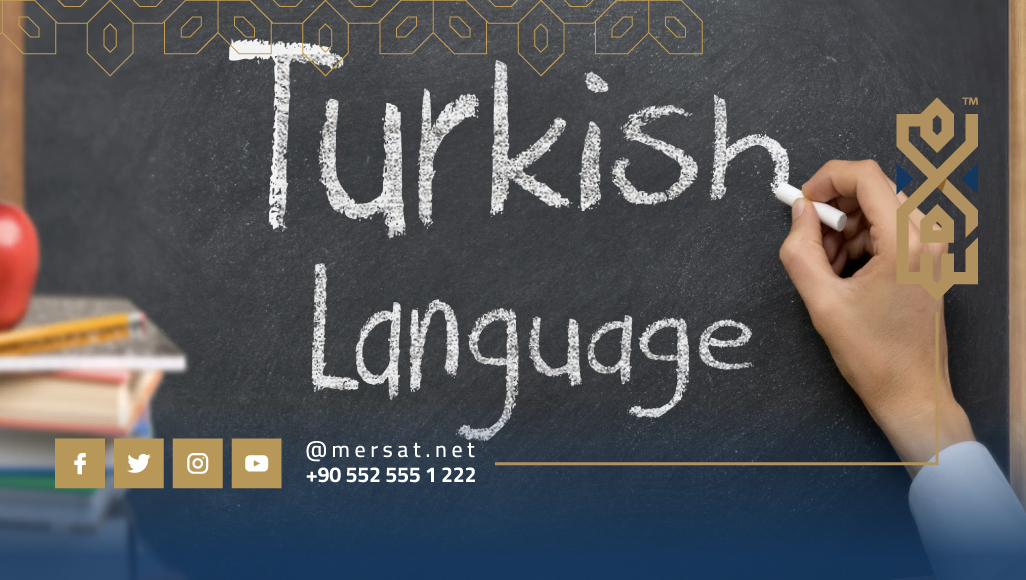
The Turkish language .. the easy abstaining for Arabic speakers
Last Updated: 2023-07-27
+
Font size
-
0
13928
Turkish language
The first real step in approaching the other lies in learning his language, this is what millions of Arab students, researchers and those interested in Turkish affairs at all educational,economic, recreational and cultural levels are fully aware of, so the number of those learning the basics of this language is increasing.
Turkish is ranked 23rd among the world's languages in terms of importance. It is the official language of Turkey, and one of the two official languages of Cyprus is also a regional official language of Kosovo. It is therefore the mother tongue of about 83 million people. In addition, it is the second language of millions of people of Turkish origin from the population of Europe, especially in Germany.
Language structure
Turkish has 29 Latin characters. Its vocabulary consists of native Turkish, Persian and Arabic words.
The sentence in the Turkish language consists of the subject, then the complements, then the verb, while the pronouns are 6 and the language contains 8 vowels ((a, e, ı, i, o, ö, u, ü)).
Turkish language throughout history
The origins of the Turkish language go back to Central Asia, where inscriptions and manuscripts written in this language were found and estimated to be about 1,300 years old. The Turkish language spread and expanded, and the number of its speakers increased with the expansion of the Ottoman Empire. After the establishment of the Turkish Republic, President Mustafa Kemal Ataturk replaced the Ottoman Turkish alphabet with the Latin alphabet and announced the establishment of the Turkish Language Association in 1932, with the aim of carrying out research on this language, reforming and reshaping it by replacing as many words of Arabic and Persian origin as possible with its Turkish equivalent, replacing hundreds of words of foreign origin with Turkish ones, and most modern terms were derived from other Turkish phrases and words, and it also revived some old Turkish terms that were not used. centuries ago.
Between Arabic and Turkish
The Turkish lexicon has 111.27 words, of which 6.459 words are from Arabic, 5.180 words from French and 1.971 words from Persian.
Many Turkish daily words in Arabic have been affected, which makes it easier for Arabic speakers to learn them, and the most prominent words that I took from Arabic are: (pen - morning - time - news - right - perfection - story - minute - state - peace - workmanship - possible).
But the most important difference lies in the fact that the order of the sentence in it is unlike the order of the Arabic sentence, in addition to the difficulty of learning the exits of Turkish letters and mastering their sounds, so the Arab needs one year to master them.
Stages of learning Turkish
There are six stages of studying the Turkish language:
- A1, A2 level I and II and after completion the student is considered a beginner.
- B1 , B2 third and fourth level and after completion is at an intermediate level.
- C 1,C 1+ fifth and sixth level, and upon completion of the fifth level, the student is considered to have an advanced level in the language.
The Turkish language proficiency certificate is called TÖMER.
The most important scholarships to learn Turkish
- Yunus Emre Turkish Language Scholarship.
- Ibn Khaldun Scholarships for Social Studies.
- Ali Kushcho Scholarship for Science and Technology.
- Ibn Sina Scholarship for Medical Sciences.
- Islamic Studies Program.
- Awards of sports excellence.
Whether learning Turkish is about studying, staying, working or leisure, mastering it will open up vast horizons within Turkey and provide insight into the ancient Islamic history of the Ottoman era.
Editorial Mersat Real Estate Team©
